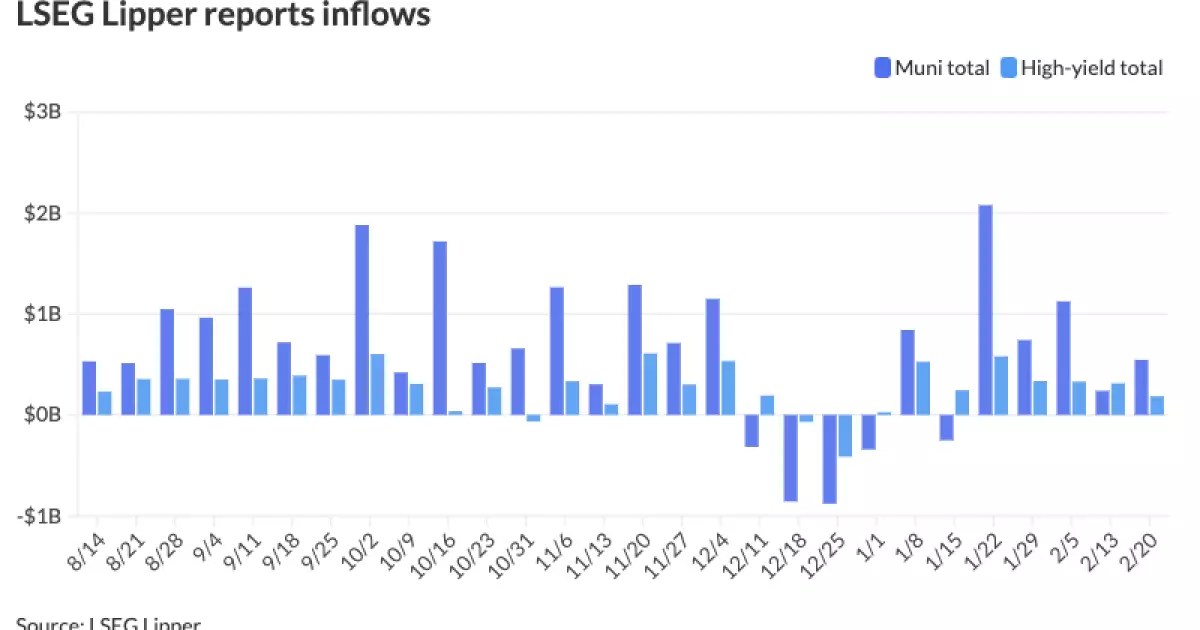The municipal bond market is currently experiencing a period of relative stability, highlighted by the recent pricing of significant bond issues, including the $2.5 billion Brightline West Passenger Rail Project. This article examines recent market developments, the influence of U.S. Treasury fluctuations, and the evolving dynamics within municipal bonds, shedding light on the broader economic implications for investors and sectors involved.
On a day when U.S. Treasury yields exhibited slight declines, municipal bonds demonstrated a degree of firmness, suggesting robust investor sentiment. The pricing of major projects, such as the Brightline West Passenger Rail Project green revenue bonds, indicates a vibrant atmosphere. These non-rated bonds reflect higher risk allowances that investors are presently willing to accept, amidst a broader tightening in public financing conditions.
Strategists from J.P. Morgan noted that this week presented favorable conditions for the tax-exempt market. The combination of $18 billion in reinvestment capital and a low supply of new issues (approximately $4.3 billion) suggests that investor liquidity remains strong. This liquidity is crucial for sustaining market confidence, especially after a week of relative underperformance in the bond market.
Monitoring the relationship between municipal bonds and U.S. Treasury (UST) yields provides valuable insights into market sentiment. On Thursday, the two-year municipal-to-UST ratio stood at 62%, demonstrating the ongoing compression in spreads as investors adapt to changing economic landscapes. With the five-year and ten-year ratios slightly higher at 63% and 67%, respectively, it’s evident that longer durations are facing a consistent demand in the face of architectural financial options.
The broader macroeconomic environment, influenced by fluctuating Treasury yields, is dynamic as inflationary pressures may spur volatility. The 10-year UST yield recently reached a peak of 4.80% in January, though it retracted to 4.54% by the month’s end. Analysts recognize that while market participants are encountering shifting narratives concerning inflation and interest rates, there remains a trend toward adjustments that signal a potential easing environment in the coming years.
As we look towards the future, several challenges and opportunities emerge within the municipal bond market landscape. The expectation of lower rates, particularly as we approach 2025, compels investors to reassess their strategies. The J.P. Morgan report anticipates intermittent windows for investment at more appealing rates, although a busy issuance schedule from March through May poses challenges in sourcing specific investment opportunities.
Pruskowski from 16Rock Asset Management outlines how stable dealer balance sheets and supportive technicals could counterbalance seasonal weaknesses. This observation is critical, as the interplay between supply and demand will shape the strategic positioning of portfolio managers in the coming months.
Investor behavior over the past week demonstrates a mixed approach toward municipal funds. Following substantial inflows of $546.3 million into municipal bond mutual funds, there is a palpable sense of cautious optimism regarding market recovery. However, high-yield funds, which captured $184 million, experienced a notable drop compared to the previous week’s significant inflow.
The contrasting movement within tax-exempt municipal money market funds, which faced outflows amounting to $769 million, further illustrates fluid investor sentiment in today’s market. This dichotomy highlights the necessity for investors to navigate carefully between various municipal offerings and assess potential risks tied to inflation and interest rate volatility.
Towards the end of February, as municipal bond yields approached historical peaks, particularly in the long-dated categories, opportunities arise. Investors must weigh potential returns against historical benchmarks, specifically given projections for lower interest rates in the medium term.
New bond issues from various entities, including notable health and educational facilities authorities and university financing systems, reinforce the health of municipal market issuances. With entities like Morgan Stanley and Siebert Williams Shank leading significant offerings, investors are presented with diverse opportunities to grade their risk profiles.
As municipal bond markets stabilize amidst fluctuating Treasury yields, investors must remain vigilant, leveraging strong liquidity while managing risks associated with economic shifts. The current environment provides both challenges and opportunities, requiring a nuanced approach as the market evolves.


Leave a Reply